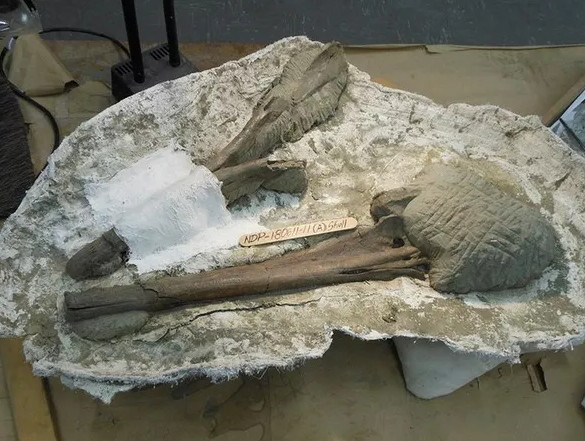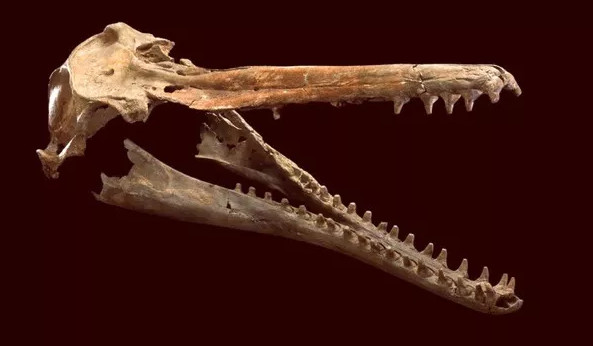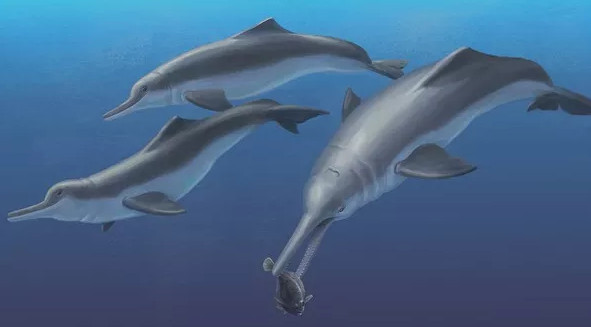Revealing new ancestors of modern dolphins
Fossils of a new dolphin have revealed the process of dolphins moving from oceans into rivers.
Detecting ancestral fossils of modern dolphins
Scientists have recently identified the fossil of a new dolphin, one of the ancestors of dolphins. This finding also helps scientists answer long-standing questions: why do some dolphins evolve to live in rivers and streams, but some do not?
- Re-describe the oldest skull of a dolphin
- Aquaculture dolphin and whale teeth
Accordingly, scientists from the National Museum of History and Tropical Research Institute in Panama have announced a new species of dolphin named Ishminia panamensis . This species has long been extinct, but has similar characteristics to modern freshwater dolphins in the Amazone river.

According to Nicholas D. Pyenson, manager of the National Museum of History in Washington, DC, the discovery of this dolphin is quite difficult. In 2011, Pyeson received a call from Panama to find fossil teeth of a family of dolphins, exposed on the Caribbean coast. Immediately, they had to race against time, carrying out the workload of 2 days in just 6 hours, because the rising tide could lose the fossil track.

The "strange" set of this fish.
The dental specimen is quite long, making Pyenson immediately think of them as the shark - the spearhead Squalodontid that lives in the ancient oceans. However, in further study, Pyenson found that the specimen seems to have the characteristics of today's freshwater dolphins. This disturbs him, why is a dolphin made like a freshwater dolphin live in the sea?

Sketching the appearance of new ancestors of dolphins.
After more than 2 years of analysis, the research team finally got the answer. Pyenson and colleagues officially announced this fossil represents a new species - the new ancestor of dolphins , which appeared during the period when some dolphin species evolved to move from the sea into freshwater rivers. .

New ancestors of dolphins are quite similar in shape to modern bottlenose dolphins.
He said this was the first fossil to show that dolphins move from the sea into the river, proving that dolphins have not been introduced into the Amazon region, at least before the time between 5.8 and 6.1. million years ago.
According to Pyeson, the new dolphin Ishmina panamensis may have sharp and even teeth. In addition, their skin may be pink.
- Discover the 'birthplace' of modern people
- The truth is that the ancestors of ancient elephants and rhinos appear to be more 'monstrous' than they are today!
- The story of our ancestors' love with extinct people
- Discover the ancient
- Dolphins die massively along the US coast
- Discover new humpback dolphins near Australia
- Are Neanderthals extinct because their eyes are too big?
- Young dolphins save the herd of more than 100 pigs from the strands
- Extremely shocking studies of dolphins
- A series of dolphins die abnormally in America
- Establish new protected areas to protect rare dolphins
- Dolphins also kill fellow species for entertainment
 Discovered an ancient centipede fossil 99 million years old
Discovered an ancient centipede fossil 99 million years old Discovered bat-like dinosaurs in China
Discovered bat-like dinosaurs in China Discovered a 200-year-old bronze cannon of the coast
Discovered a 200-year-old bronze cannon of the coast Discover 305 million-year-old spider fossils
Discover 305 million-year-old spider fossils